Blog
August 13, 2025
PHP container technology and orchestration tools help your team to streamline deployments, ensure consistency, and manage increasingly complex PHP app infrastructure. However, 2025 saw a few interesting changes emerge around usage of these technologies, with a growing trend toward more scalable solutions.
In this blog, I explore the 2025 landscape of PHP container and orchestration usage, highlighting adoption trends, key technologies, and the challenges developers face. Along the way, I provide insight and analysis on what this data means for your team.
PHP Container and Orchestration Usage: Overview
PHP has a “shared nothing” architecture, meaning after each request is handled, it discards all state before processing the next request. This architecture enables horizontal scaling, where instead of adding more capacity to your application server, you throw more servers into the mix and use a load balancer to route to the least busy instances.
While this makes scaling simpler, it also poses another problem: how do you orchestrate the application? You now need a load balancer, multiple PHP nodes, likely some sort of distributed session storage such as Redis or Valkey, and, of course, any other services you consume.
It is the need to scale horizontally that has driven adoption of both containers and orchestration tooling in the PHP ecosystem, and which has produced some interesting shifts in the 2025 landscape.
Back to topRead the Full 2025 PHP Landscape Report
Discover how PHP orchestration and container adoption trends have evolved in the past year, and explore emerging trends, top technologies, and other changes in the PHP ecosystem.
PHP Container Deployment in 2025
Each year, we conduct a survey of self-identified PHP professionals across regions and industries to fully track the evolution of PHP. One area of note is always how teams are using and deploying container technologies. With that in mind, we began this section by asking our participants to tell us about their usage and future plans surrounding container technologies.
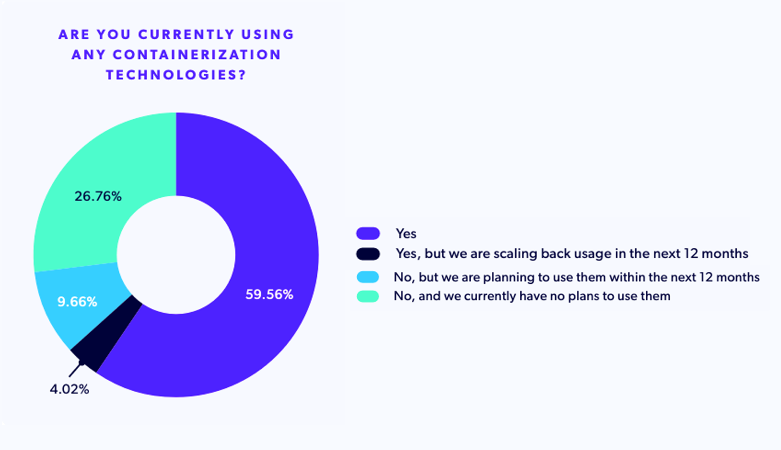
Nearly 60% of respondents reported yes, they were currently deploying PHP containers in their applications. An additional 4% currently used PHP containers but were planning on scaling back within the next year, and approximately 10% didn’t use containers at time of survey but planned to within the next year. 27% didn’t use PHP containers and had no plans to implement them.
Large Companies Are More Likely to Deploy PHP Container Technologies
To better understand our findings, we then segmented our data by company size. Large companies with over 100 employees were nearly 15% more likely to be currently using containers compared to companies with 100 employees or fewer. Full data can be viewed below.
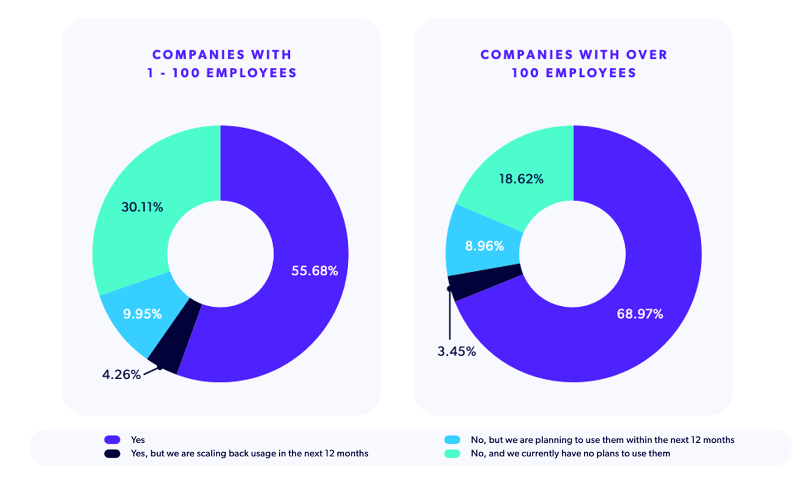
This aligns closely with our data from our 2024 survey, showing that container adoption rates remain relatively consistent year over year.
PHP Containers Benefit Applications, But Aren't Without Cost
Containers provide a way to create reproducible PHP environments, ensuring you have the same environment in development as in production and removing the “it works on my machine” excuse when something breaks. However, containers do come with a steep learning curve, which smaller organizations can’t always accommodate, making them a more accessible option for large businesses with more resources.
Back to topPHP Containers Provided by the Community
To create a comprehensive picture of the current PHP landscape, we then asked our participants who used PHP containers if they were using community-provided container images.
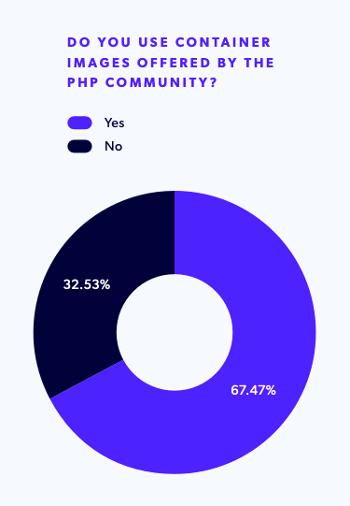
67% said yes, they were currently using PHP container images provided by the community. This makes sense to us, as community-provided PHP containers can be used to quickly set up consistent and pre-configured environments, saving time on manual setup.
But using community containers was not without challenges. As shown in the chart below, 26% of respondents named Difficulty Managing Extensions as the leading issue with using community container images. This was followed by Lack of Documentation or Support (17%), Lack of Optimization for Specific Environments (13%), and Poorly Configured or Misconfigured Images (9%).
Common write-in answers were slow build times, and community container images failing to keep pace with the PHP release cycle.
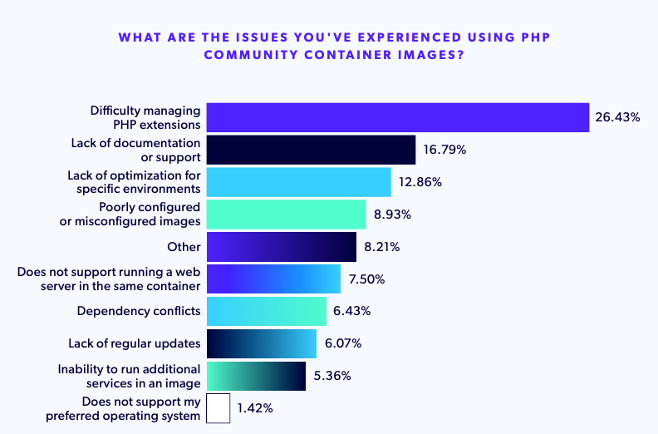
Back to topGet Container-Ready With Zend
Make your container initiatives a success with comprehensive PHP services, expert PHP support, and container-ready PHP products that meet CIS security benchmarks.
The Top PHP Container Technologies
Each year, we ask our participants which PHP container technologies are most used in their applications, allowing for the selection of multiple options as needed. This allows us to track the changing trends in the ecosystem.
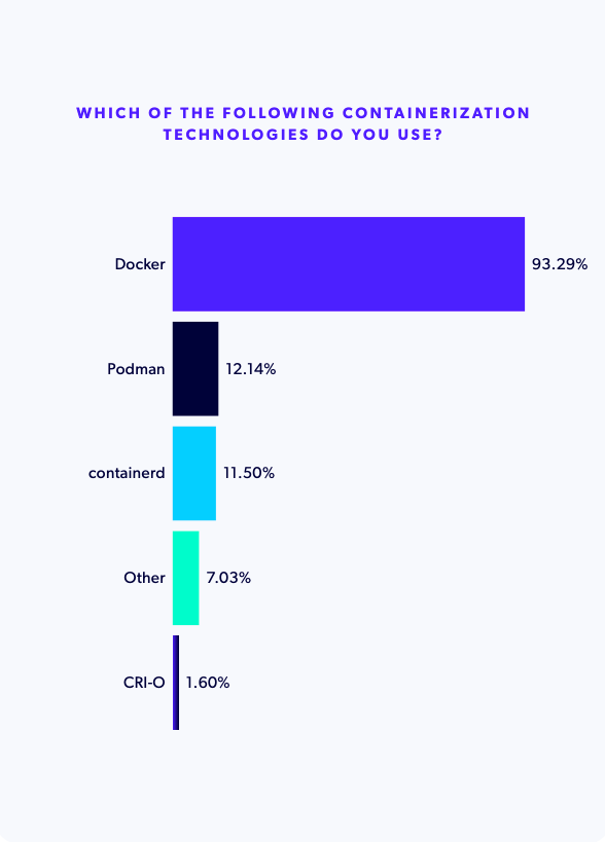
Docker was the most used at 93% of participants, followed by Podman (12%), containerd (12%), Other (7%), and CRI-O (2%). Repeated write-in options included LXC, k8, and Rancher.
While this does mostly track with our 2024 findings, a key deviation stuck out to us: the increase in usage of both Podman and containerd. Podman rose from 8% in 2024 to 12% this year, and containerd moved from 5% to 12%, more than doubling in usage. We look forward to continuing to track these changes to see if this upward trend continues.
Back to topPHP Orchestration Trends
Our survey results showed that nearly 38% of teams used PHP orchestration technology at the time of survey, with an additional 3% currently using orchestration tech but planning to scale back within the next year. 11% did not use orchestration technology, but planned to within the next 12 months. 49% did not use PHP orchestration technology and had no plans to do so.
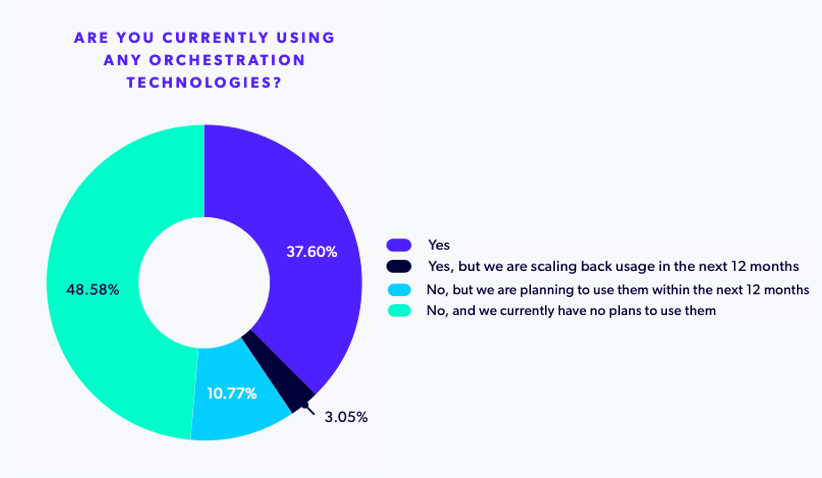
Large Developer Teams Are More Likely to Deploy PHP Orchestration Technology
Comparing our findings by developer team size, we found that PHP teams with 20 members or more were nearly twice as likely to utilize container technology than their counterparts with 20 members or fewer.
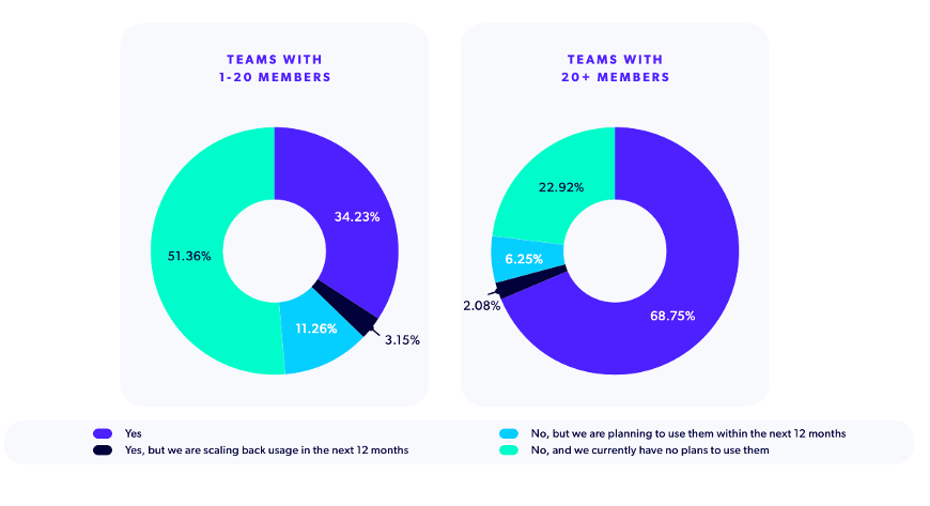
While many developer teams utilize PHP orchestration technologies, they are more accessible to larger organizations with a larger pool of developer resources. While consensus remains that PHP orchestration tools can streamline deployment, help scaling, and reduce operational overhead, they do require a larger investment of time and resources to implement.
Leading PHP Orchestration Technologies
We then asked participants to identify which orchestration technologies they use in their applications.
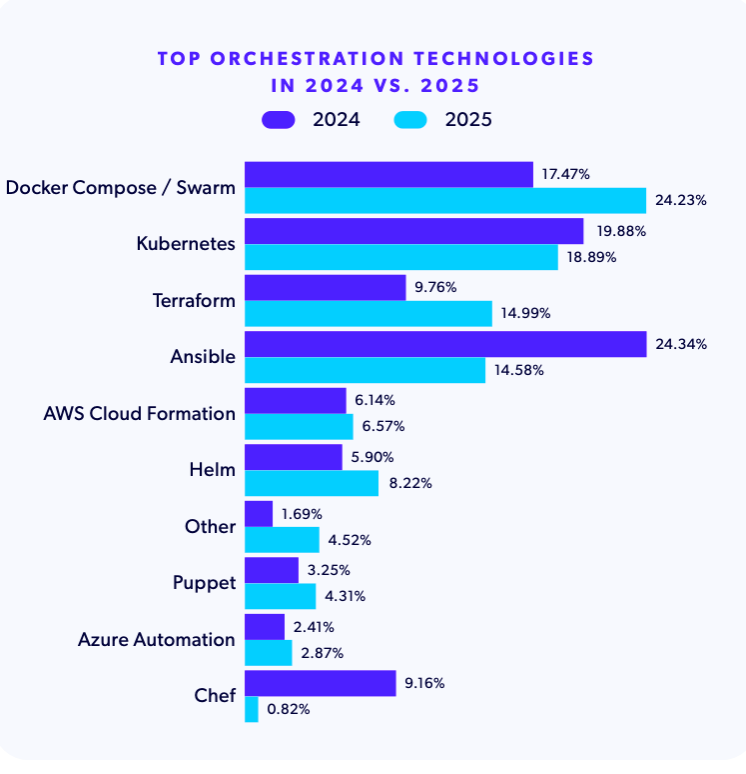
Compared to 2024, we found that Docker Compse/Swarm had outpaced Kubernetes as the top PHP orchestration technology. However, both saw a change in usage year over year, with Docker/Compose Swarm rising from 17% of 2024 participants to 24% in 2025, and Kubernetes falling in usage by approximately 1%.
Other orchestration technologies likewise saw a rise in adoption this year, including Puppet, Azure Automation, and Terraform. Terraform is particularly noteworthy, with 15% of respondents reporting usage at slightly outpacing Ansible.
ZendPHP Modules for Puppet
Integrating ZendPHP into your Puppet pipeline has never been easier. With modules available for ZendPHP and ZendHQ, your team can have a faster way to work with fully supported EOL PHP runtimes.
Horizontal Scaling Drives PHP Orchestration Adoption
The need for horizontal scaling has largely driven PHP orchestration technology adoption. This is reflected in the fact that the leading orchestration tooling choices are Docker Compose/Swarm and Kubernetes. Compose and Swarm are easier technologies to learn and master, and since many applications can run on a single physical instance, they are often sufficient.
Terraform vs. Ansible
We were surprised to see Terraform outpace Ansible this year, as Ansible has had steady growth due to backing from RedHat and IBM. That said, the immense platform agnosticism of Terraform, and the ease with which you can provision machines for deploying k8s clusters, makes it a good fit for those using containers as well.
Back to topFinal Thoughts
As applications continue to grow in complexity, the adoption of PHP container and orchestration technologies has become essential for maintaining scalability, consistency, and efficiency.
Looking ahead, the trends and insights from our report underscore the importance of staying informed and adaptable in the quickly changing PHP ecosystem. Whether your team is just beginning to explore containers or refining its orchestration strategies, understanding the latest developments can help you make smarter decisions and unlock the full potential of your PHP applications.
Mission-Critical PHP Made Possible
Fully supported ZendPHP runtimes, when paired with the ZendHQ extension, deliver the tools needed to build secure, scalable, and optimized web applications. Learn more and try both free for 21 days via the buttons below.
Additional Resources
- Guide - How to Develop Web Applications with PHP
- Webinar – The Peaks and Valleys of PHP Containerization and Orchestration
- Blog – PHP Orchestration With ZendPHP Docker Images
- Blog - How PHP Containers Improve App Security
- Blog – PHP Web Application Hardening With CIS Hardened Docker Images
- Blog – PHP Security and Compliance Trends
- Blog – PHP Usage and Deployment Statistics
- Blog - PHP Migration Trends to Watch
